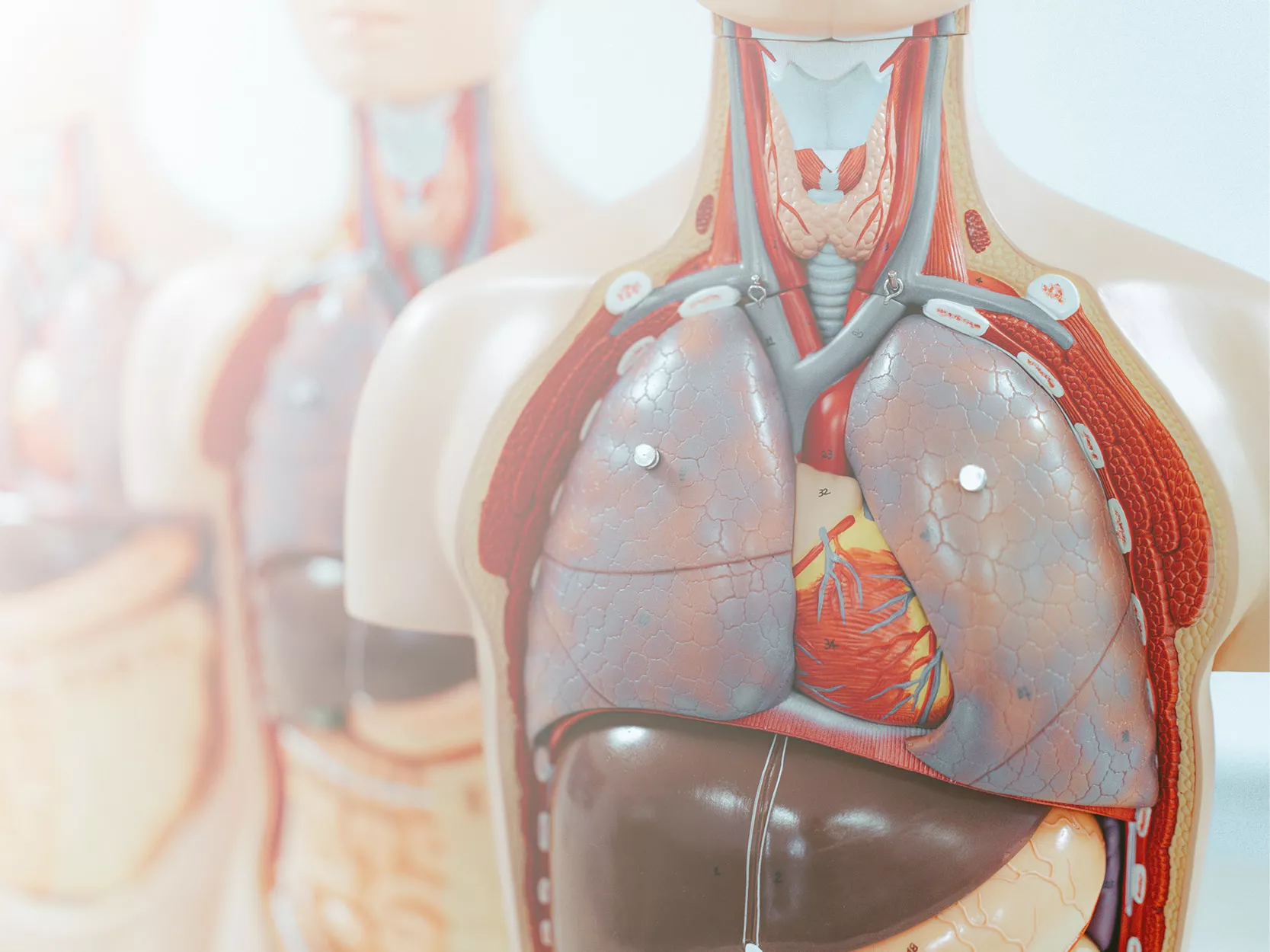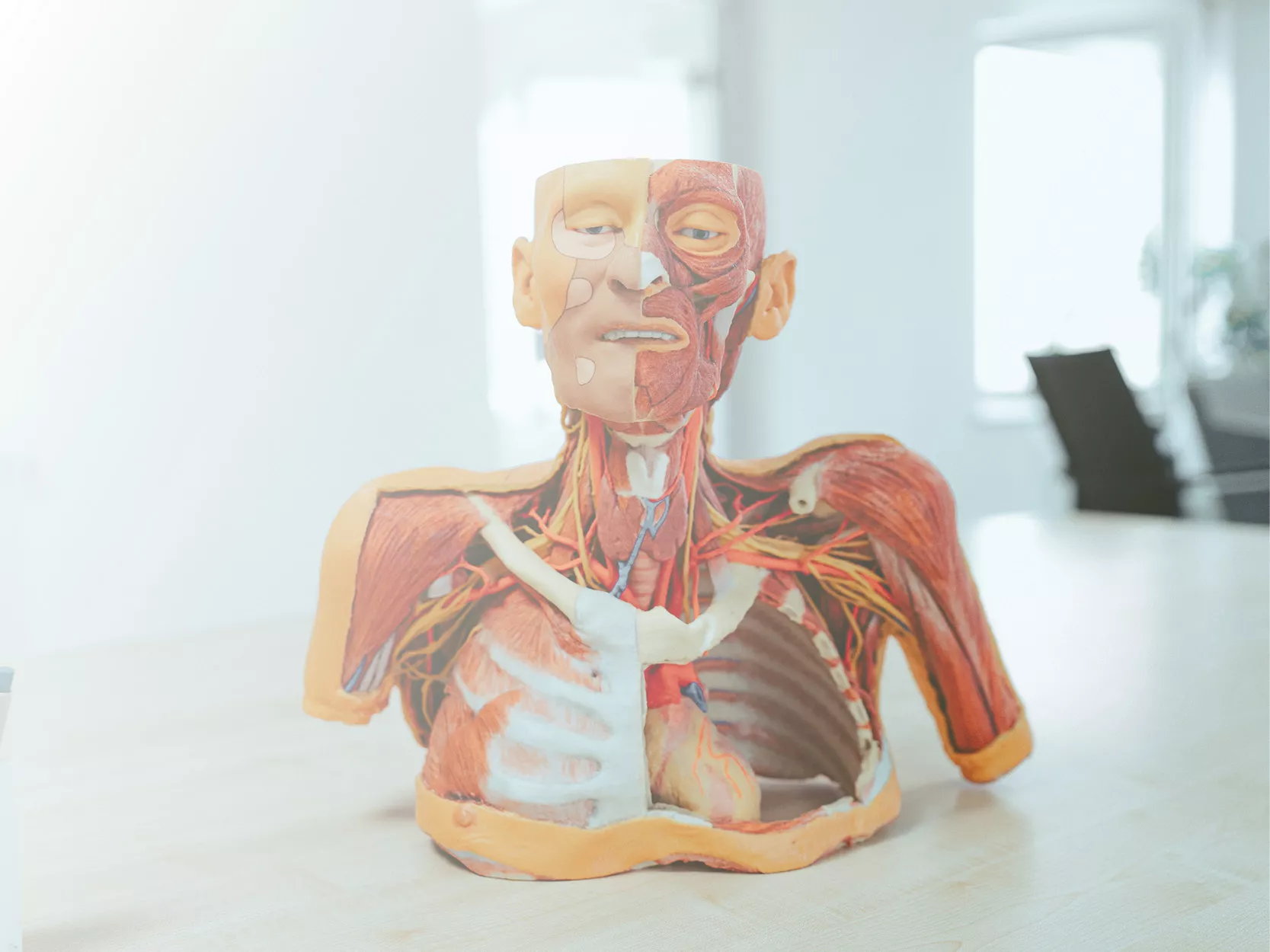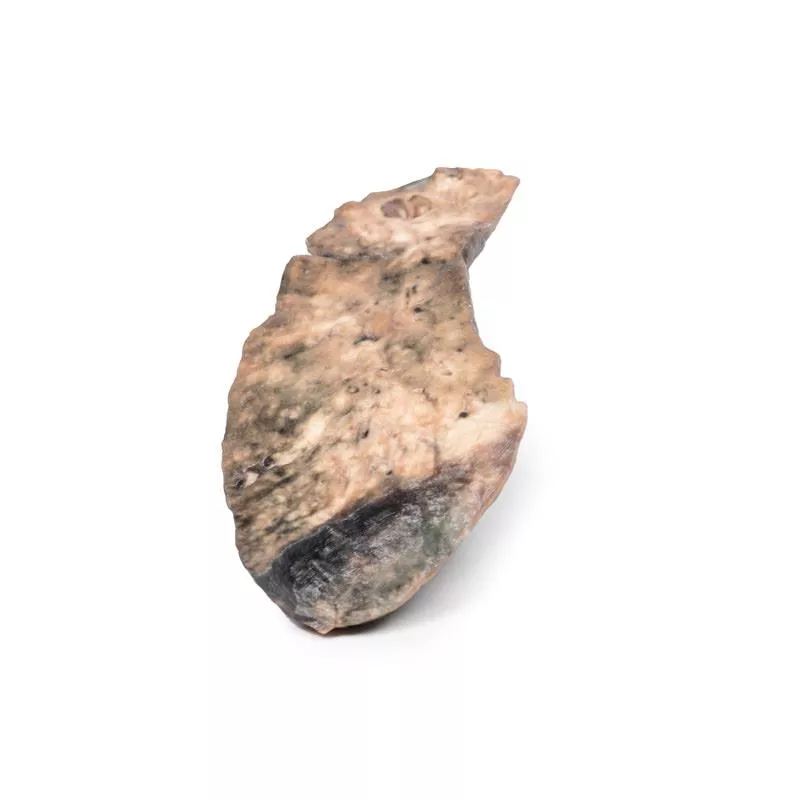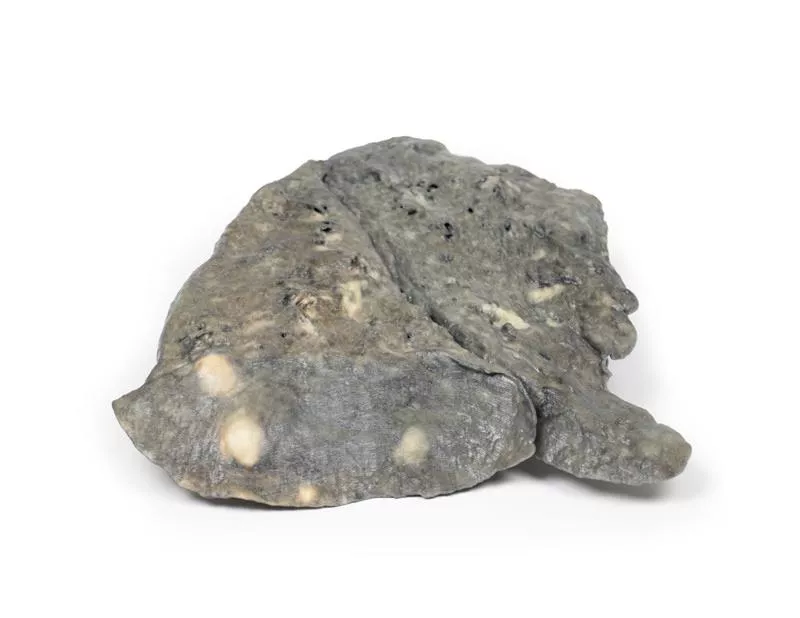Product information "Lobar pneumonia - Grey Hepatisation Phase"
Clinical History
There is no clinical history available for this specimen.
Pathology
The specimen is a parasagittal section of the right lung. The boundary between the upper and lower lobes is clearly defined. The entire upper lobe is congested and pale grey, showing significant pathological change.
Further Information
This specimen represents a stage of lobar pneumonia characterized by grey hepatisation, a form of late consolidation. This stage occurs approximately 2 to 3 days after red hepatisation and typically lasts 4 to 8 days.
The lung appears grey and firm, resembling liver tissue. This consistency is caused by a fibrinopurulent exudate, breakdown of red blood cells, and accumulation of haemosiderin. Macrophages become prominent in the interstitial tissue and work to clear cellular debris and resolve inflammation. When they consume red blood cells, they may contain iron and are then called siderophages.
By the eighth day, the resolution process begins. Enzymatic activity starts centrally, liquefies the solid content, and gradually restores normal lung aeration.
Common causative organisms of lobar pneumonia include Streptococcus pneumoniae (pneumococcus), Haemophilus influenzae, and Moraxella catarrhalis. Other possible pathogens are Legionella pneumophila, Klebsiella pneumoniae, and Mycobacterium tuberculosis, particularly in untreated cases of tuberculosis.
On radiographs, an entire lobe appears radiopaque, which is a typical sign of lobar pneumonia.
There is no clinical history available for this specimen.
Pathology
The specimen is a parasagittal section of the right lung. The boundary between the upper and lower lobes is clearly defined. The entire upper lobe is congested and pale grey, showing significant pathological change.
Further Information
This specimen represents a stage of lobar pneumonia characterized by grey hepatisation, a form of late consolidation. This stage occurs approximately 2 to 3 days after red hepatisation and typically lasts 4 to 8 days.
The lung appears grey and firm, resembling liver tissue. This consistency is caused by a fibrinopurulent exudate, breakdown of red blood cells, and accumulation of haemosiderin. Macrophages become prominent in the interstitial tissue and work to clear cellular debris and resolve inflammation. When they consume red blood cells, they may contain iron and are then called siderophages.
By the eighth day, the resolution process begins. Enzymatic activity starts centrally, liquefies the solid content, and gradually restores normal lung aeration.
Common causative organisms of lobar pneumonia include Streptococcus pneumoniae (pneumococcus), Haemophilus influenzae, and Moraxella catarrhalis. Other possible pathogens are Legionella pneumophila, Klebsiella pneumoniae, and Mycobacterium tuberculosis, particularly in untreated cases of tuberculosis.
On radiographs, an entire lobe appears radiopaque, which is a typical sign of lobar pneumonia.
Erler-Zimmer
Erler-Zimmer GmbH & Co.KG
Hauptstrasse 27
77886 Lauf
Germany
info@erler-zimmer.de
Achtung! Medizinisches Ausbildungsmaterial, kein Spielzeug. Nicht geeignet für Personen unter 14 Jahren.
Attention! Medical training material, not a toy. Not suitable for persons under 14 years of age.


































